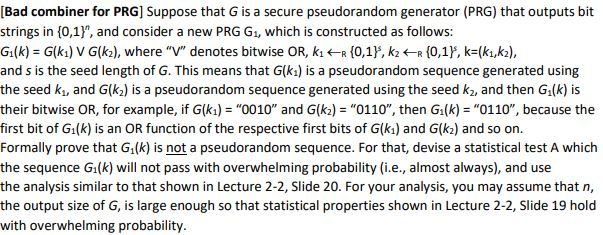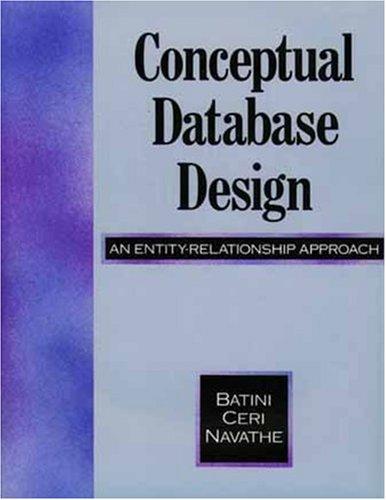
[Bad combiner for PRG] Suppose that G is a secure pseudorandom generator (PRG) that outputs bit strings in (0,1), and consider a new PRG G1, which is constructed as follows: Gi(k) G(ki) V G(k2), where "V" denotes bitwise OR, kR 10,1, k2 -R 10,1F, k (k,k2), and s is the seed length of G. This means that G(k) is a pseudorandom sequence generated using the seed ki and G(k2) is a pseudorandom sequence generated using the seed k2, and then G(k) is their bitwise OR, for example, if G(k) = "0010" and G(k) = "0110", then G1(k)-0110", because the first bit of G1(k) is an OR function of the respective first bits of G(k) and G(k2) and so on. Formally prove that G1(k)is not a pseudorandom sequence. For that, devise a statistical test A which the sequence G1(k) will not pass with overwhelming probability (i.e., almost always), and use the analysis similar to that shown in Lecture 2-2, Slide 20. For your analysis, you may assume that n, the output size of G, is large enough so that statistical properties shown in Lecture 2-2, Slide 19 hold with overwhelming probability. [Bad combiner for PRG] Suppose that G is a secure pseudorandom generator (PRG) that outputs bit strings in (0,1), and consider a new PRG G1, which is constructed as follows: Gi(k) G(ki) V G(k2), where "V" denotes bitwise OR, kR 10,1, k2 -R 10,1F, k (k,k2), and s is the seed length of G. This means that G(k) is a pseudorandom sequence generated using the seed ki and G(k2) is a pseudorandom sequence generated using the seed k2, and then G(k) is their bitwise OR, for example, if G(k) = "0010" and G(k) = "0110", then G1(k)-0110", because the first bit of G1(k) is an OR function of the respective first bits of G(k) and G(k2) and so on. Formally prove that G1(k)is not a pseudorandom sequence. For that, devise a statistical test A which the sequence G1(k) will not pass with overwhelming probability (i.e., almost always), and use the analysis similar to that shown in Lecture 2-2, Slide 20. For your analysis, you may assume that n, the output size of G, is large enough so that statistical properties shown in Lecture 2-2, Slide 19 hold with overwhelming probability







